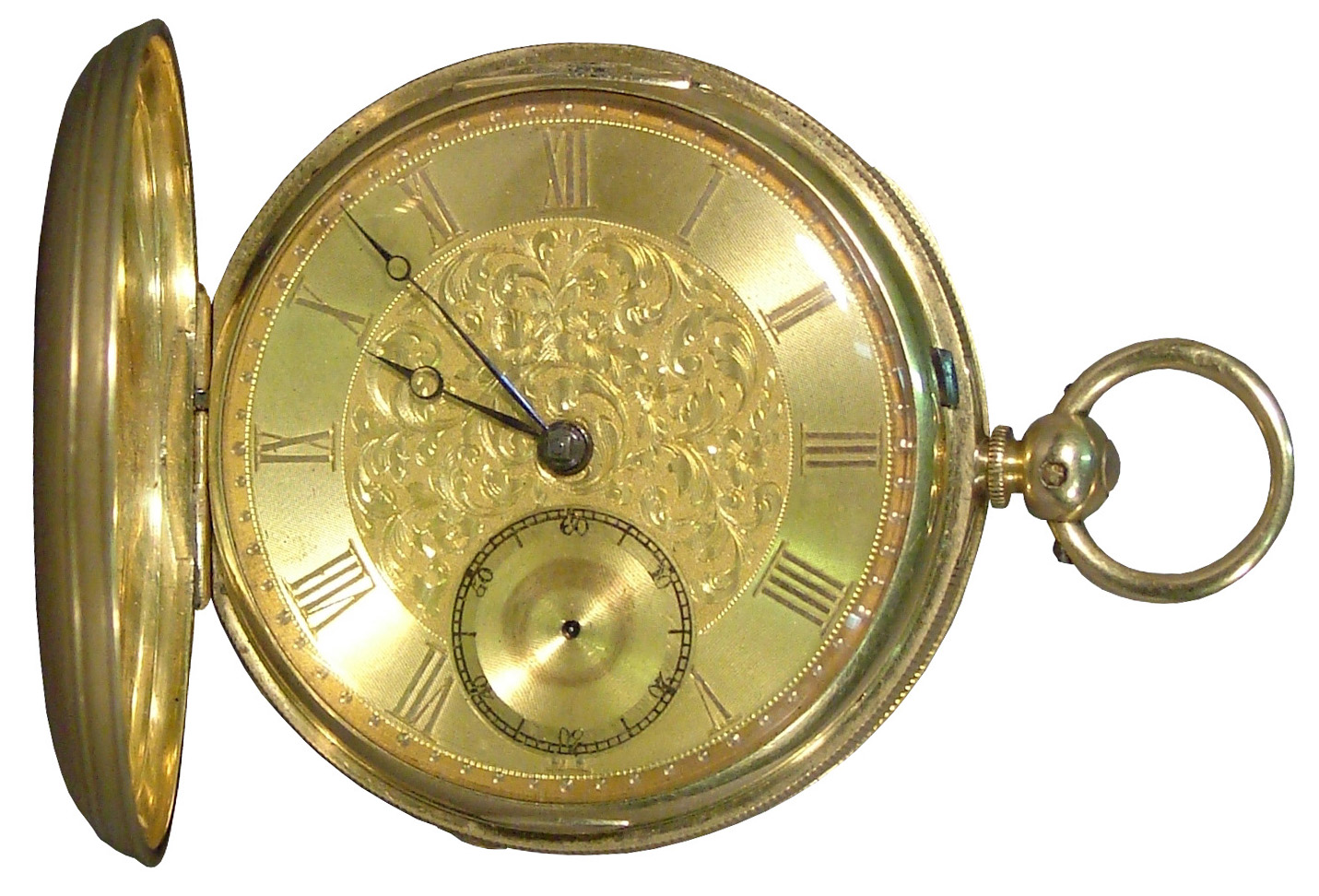This gold pocket watch was a gift from one of the Weatherston brothers to their father Peter. The watch features an engraved design in the centre of the front which includes the initials 'PW' and appears to have been manufactured in London in 1861. It has two hinged doors (front and back). Behind the front door is the face, covered by a domed glass cover with gold bezel. The face features a flat dial, Roman numerals, black minute and hour hands, and a seconds dial inset at the centre of the lower part of the face so that there is no number 'VI' on the main dial (the sweep hand for this seconds dial is missing). There is an engraved design of scrolling acanthus leaves in the centre of the face. Behind the back door is a metal plate with the shaft for winding the watch and an engraved inscription: 'To Mr. Peter Weatherston from his affectionate son JohnOtago 1862'.
The pocket watch dates from an important era for Otago history; the gold rushes. The name Weatherston is also significant. The Otago gold rushes began in 1861 and reached their peak in 1863. The gold rushes transformed Dunedin, making it the capital of New Zealand’s wealthiest province. Otago’s population in the first half of 1861 was less than 13,000people. By the end of 1861 it had reached 30,000. In 1863 annual gold production peaked at 17,400kg.
After Gabriel Read’s discovery of gold in the Tuapeka River on 23May 1861 more discoveries quickly followed. Although only one gully east of Gabriels Gully, gold was not discovered at Wetherstons (as the place-name was officially misspelt) until mid-July 1861 when the Weatherston brothers found gold there.
John Weatherston, who had been unsuccessful at Gabriels Gully, had gone out pig shooting. He shot two pigs, hid one in the tussock and returned to town with the other to sell for provisions. The next day he returned with his brother (there are conflictions between which Weatherston brother, some say Will, while others say David) to collect the other pig. They decided to do some prospecting while they were there. They dug a hole on the river flat and quickly obtained 30 ounces of gold. They agreed to keep the discovery quiet to give themselves time to prospect the whole area with the purpose of staking a claim to the richest ground they could find. John stayed to guard the site while the other brother went into town to gather more supplies; but he could not keep quiet about the discovery. His odd behaviour raised suspicions and someone followed him back to the site. News spread quickly and the area was soon full of hopeful miners. The brothers had to stake a claim where they stood which turned out to be just an average one.
Wetherstons rapidly developed to have the largest population on the goldfields at the time, said to be 5,000. During an equivalent period off our weeks in November 1861 Wetherstons was reported to have produced more gold than Gabriels Gully and some miners were returning six ounces of gold per week.However after the Dunstan was rushed in August 1862, it became all but deserted. The population slowly returned as miners worked over the material again. A town site was surveyed in 1865 with streets named after the main ones in Melbourne. Soon there were eight hotels operating (down from 14) as well as stores, a drapery, post office, blacksmith, news agent, watch maker, ironmonger, butcher, two banks, dancing saloons and numerous gambling dens. A school was opened in 1868 and closed in 1921. Beer was first brewed behind theShaving Saloon in 1863 and by 1866 the Black Horse Brewery was producing ‘PrimeAle’ due in part to the quality of the Wetherstons stream. The brewery supplied the area from Canterbury to Bluff but was closed down in 1923 after being bought by NZ Breweries. One miner, Ben Hart, was an enthusiastic gardener and from 1895 was responsible for planting 25 acres around the brewery. The most notable were the wide range of daffodils and rhododendrons, which remain today.

Weatherston Pocket Watch